Submitted by WA Contents
MAD unveils its twisting mixed-use Qondesa tower, set to become Quito’s tallest building
Ecuador Architecture News - May 05, 2023 - 15:44 4669 views
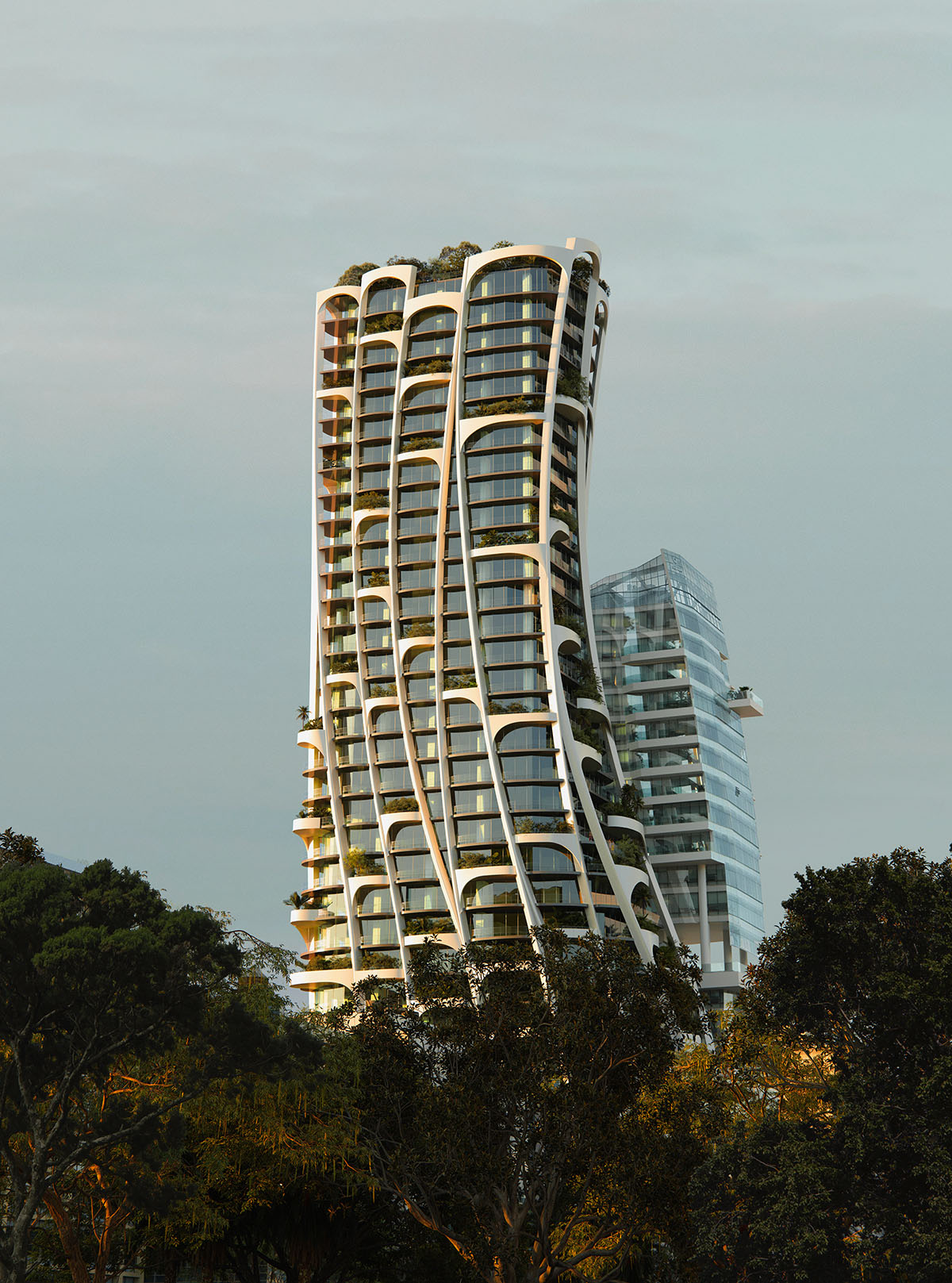
MAD has unveiled design for a new mixed-use tower, comprised of a twisting silhouette and with protruding details in Quito, Ecuador.
Called Qondesa, when complete, the tower will be MAD's first South American project and become Quito’s tallest building in Ecuador.
MAD's mixed-use tower, developed by Quito-based architectural developer Uribe Schwarzkopf, will consist of "intimately scaled urban apartments", as well as multiple amenities and communal areas, aiming to create "a vertical community where residents play a fundamental role in animating the building."
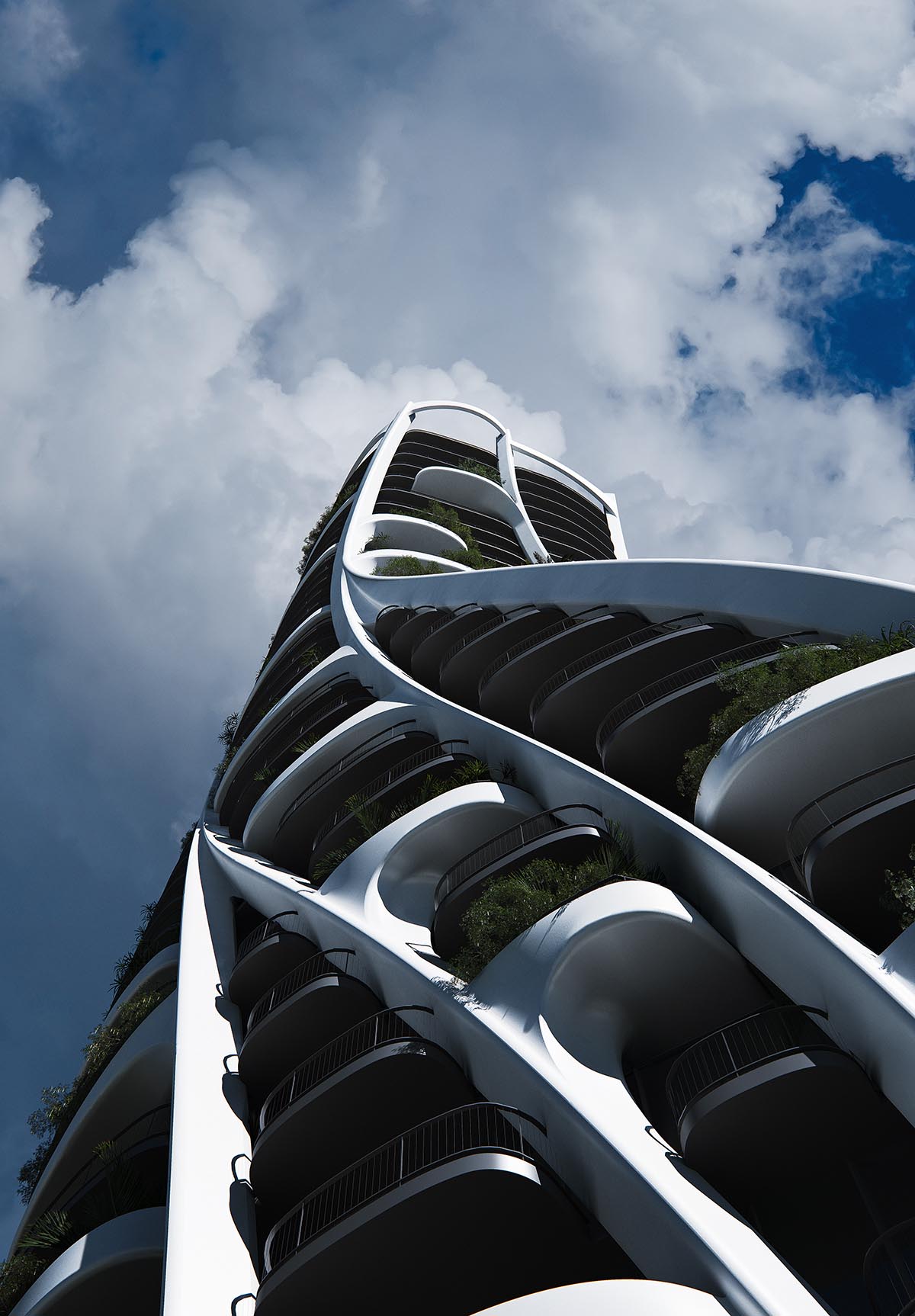
Image © Mir
"Quito, a city of coexisting contrasts influenced by its diverse ecosystems, ethnicities and traditions, is the capital of Ecuador and a UNESCO world heritage site, which features the best-preserved and least altered historic center in South America," said MAD.
The design scheme, led by Ma Yansong, integrates a design solution prioritizing nature combining with high-density living with a vision of an ecological future.
MAD is inspired by the city's natural backdrop, seeking to connect residents to the beauty of nature through the building’s dynamic design.
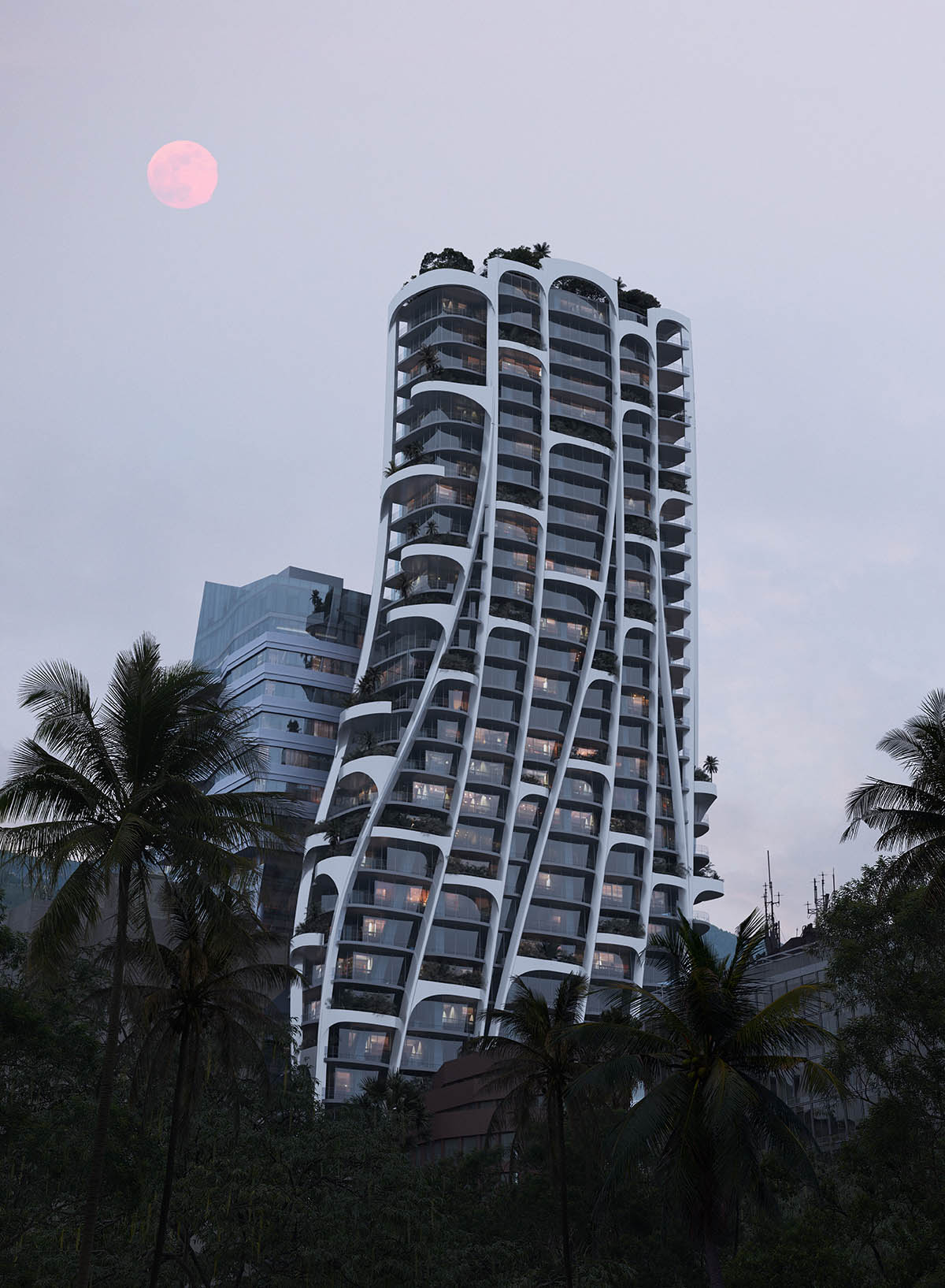
Image © Mir
The tower looks like it is growing from the earth to the sky, Qondesa’s exterior facade resembles "twisting vines" weaving around the building to taper at its top, and sprout greenery which form planters throughout the building’s balconies.
In addition, the exterior shape of Qondesa is designed so as not to block natural light and views from the surrounding buildings.
The project is located in the Guayllabamba river basin and on the eastern slopes of Pichincha, an active stratovolcano in the Andes mountains.
The firm envisions a stone-coloured appearance for the facade, the details are conceived as a nod to the stone facades in Quito’s Old Town, where historic buildings used the volcanic stone from the nearby volcano.
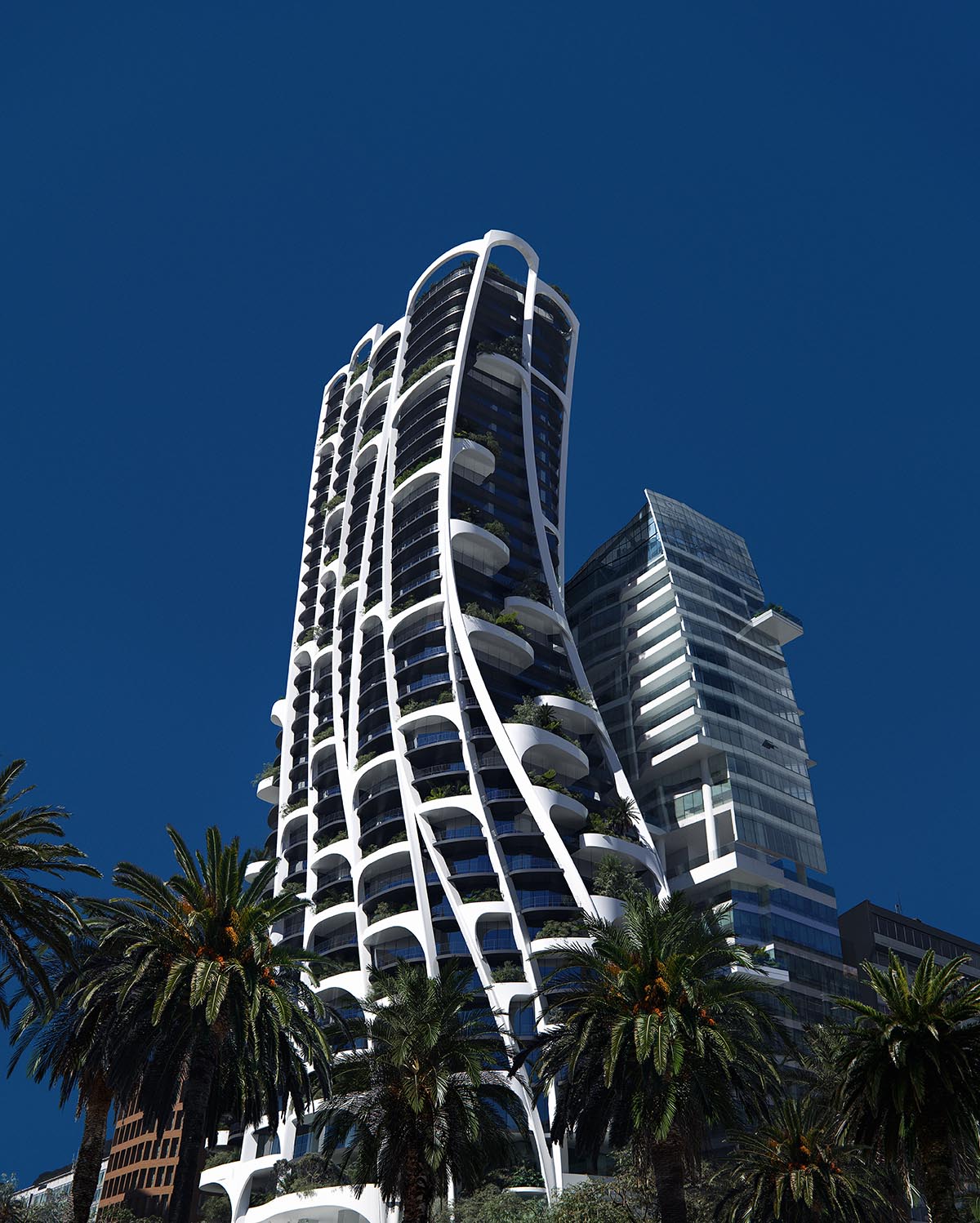
Image © Mir
The playful organic lines of the façade are paired with the protruding, native vegetation to create an elegant aesthetic that will become a landmark to the city’s skyline.
The tower, described as a green design, comprises intimately scaled urban apartments, and conveniently connected to Quito’s main destinations via the neighboring Iñaquito Metro station to offer an ideal residential destination for Quito’s city dwellers.
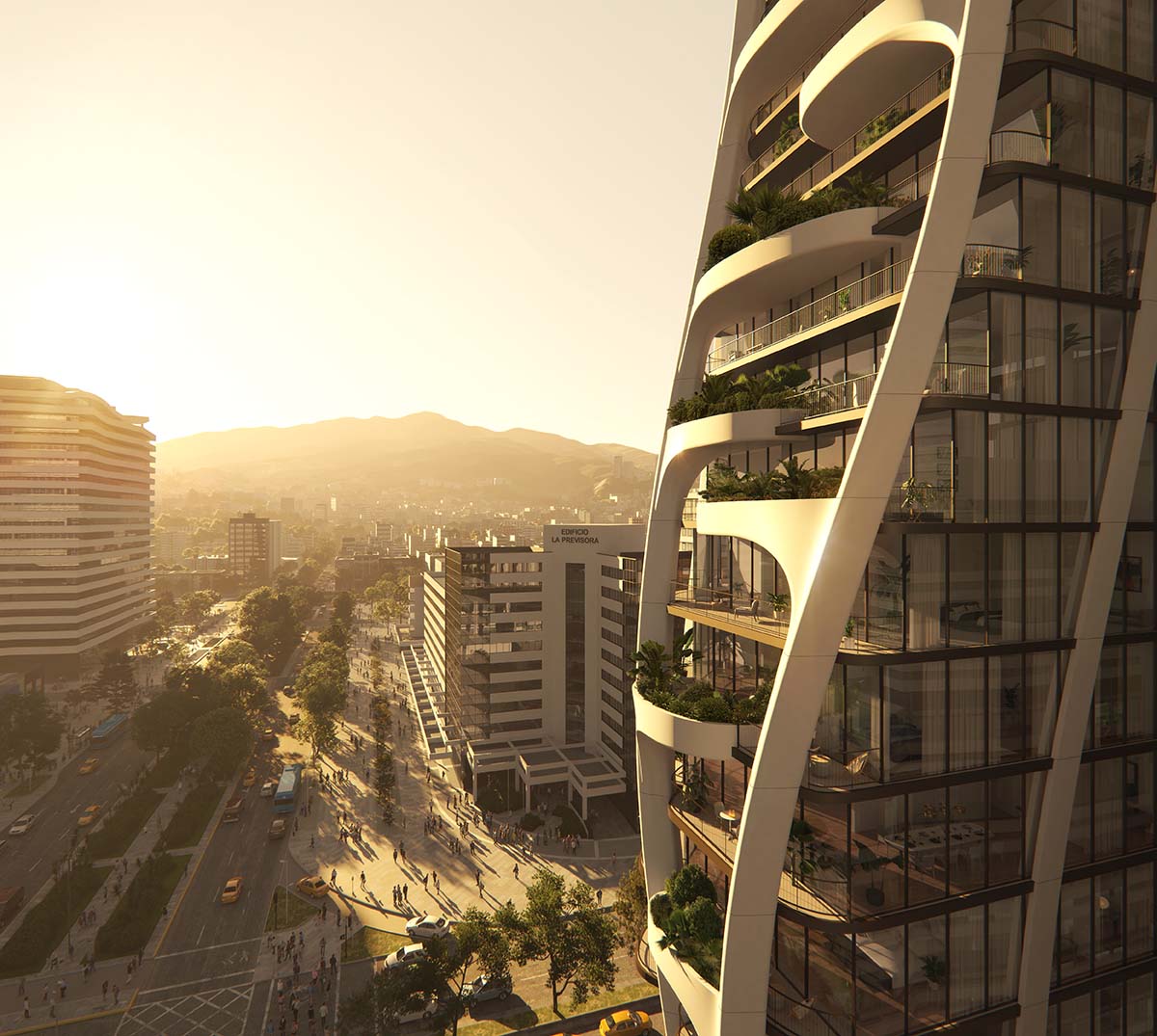
Image © Plomp
It is additionally located across from La Carolina Park, a 67-hectare active green space in the heart of the city that connects all residential, business and leisure elements together.
It also includes multiple amenities and communal areas, and according to the studio, "Qondesa promotes a new possibility for a vertical community where residents play a fundamental role in animating the building."
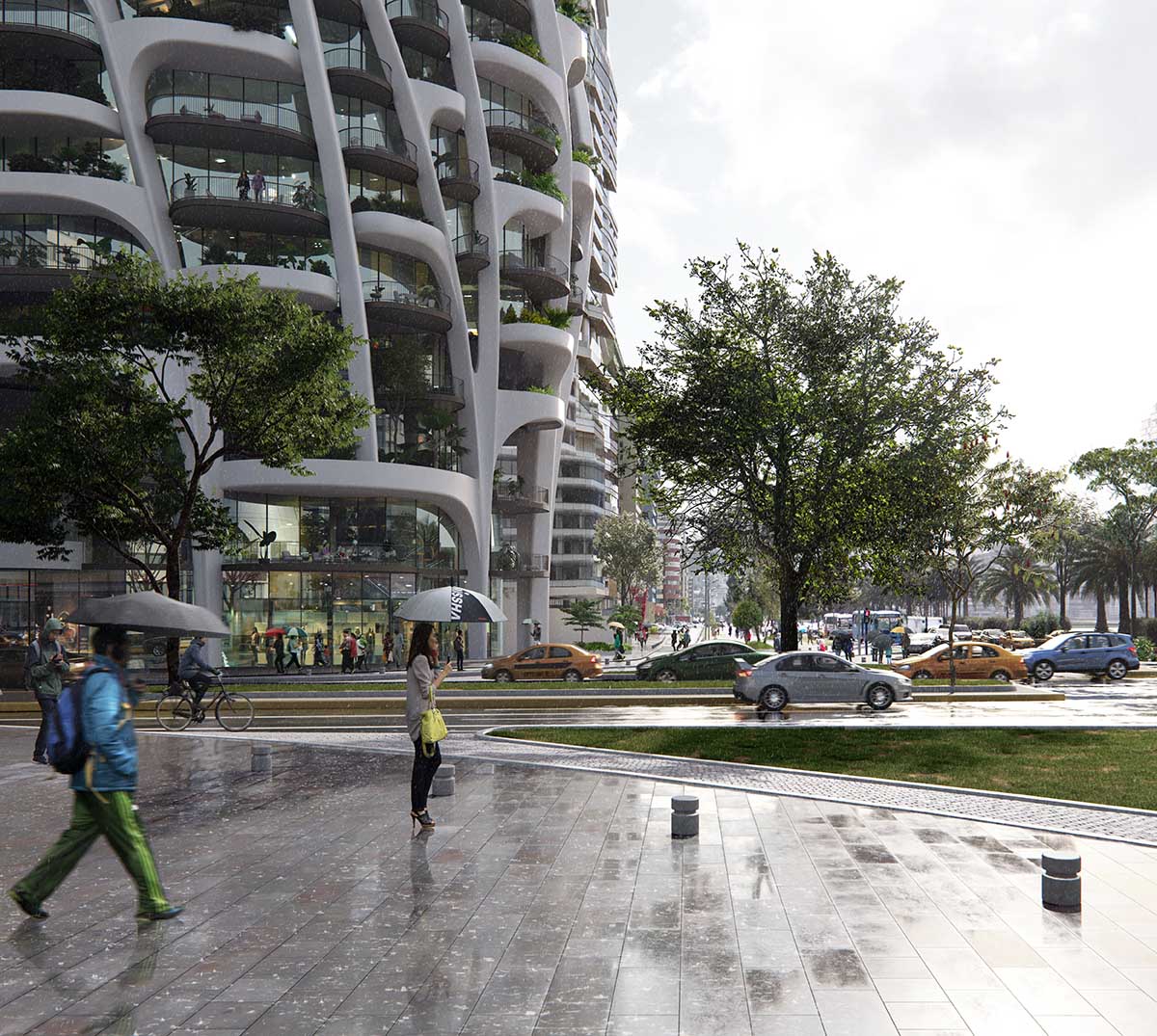
Image © Plomp
The tower addresses to Qondesa’s scale, design and functionality, complemented by eco-efficient engineering. MAD incorporates sustainability parameters through responsible consumption of resources and energy, as well as comprehensive waste management beginning in its construction stage.
"This important urban contribution is part of the new urban plan for Quito, which aims to create a more environmentally friendly city with an overall higher quality of life for its inhabitants," said the studio.
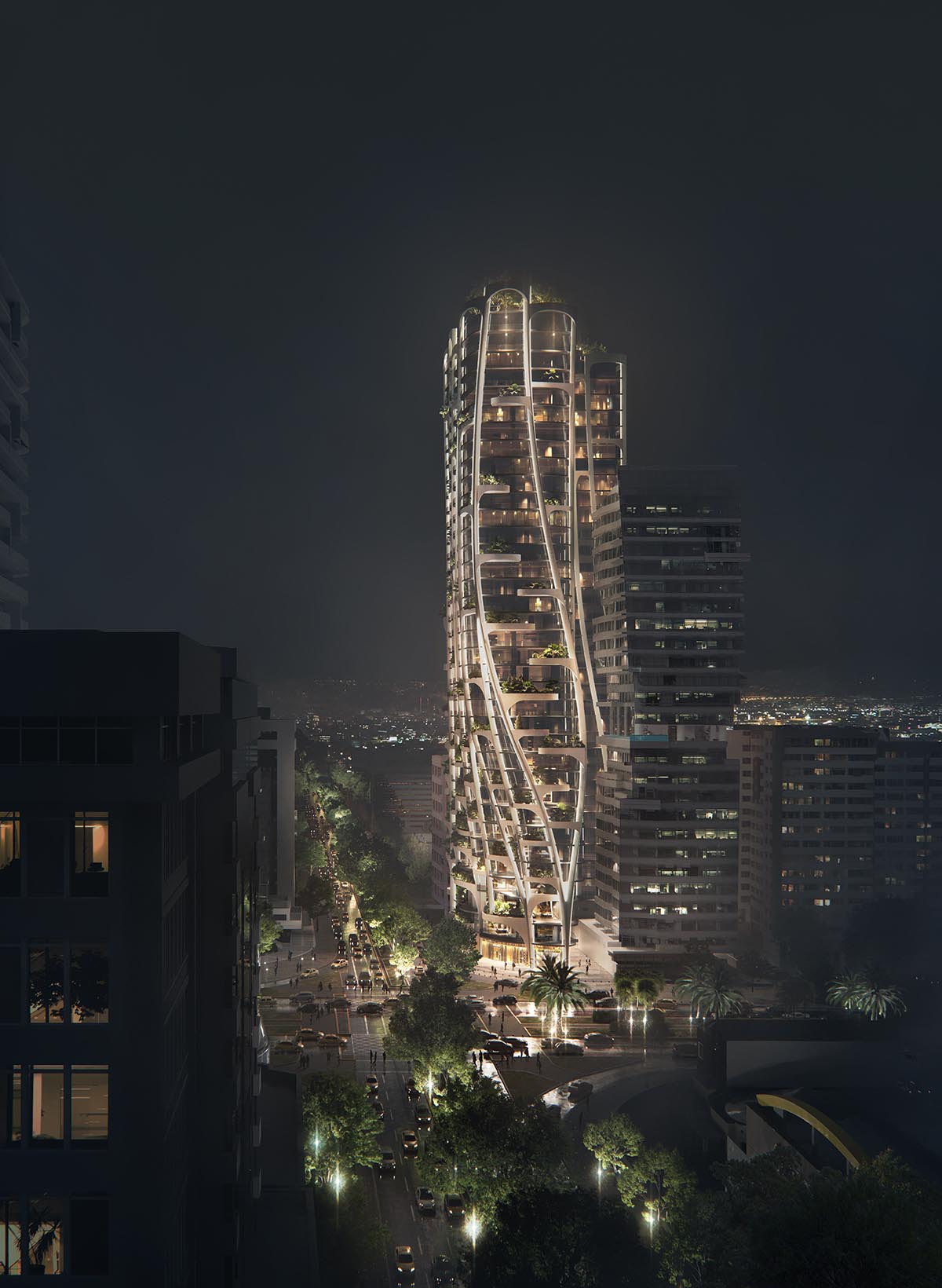
Image © Plomp
MAD recently created a reflective cube that touches the ground from a single point at Milan Design Week. The firm is working on the transformation of an old warehouse into a center for dance in Rotterdam.
The firm completed the 30,000-seat capacity Quzhou Stadium, marking the first signature stadium of Quzhou Sports Park in the historic city of Quzhou, China.
Project facts
Project name: Qondesa
Architects: MAD
Date: 2022 - Ongoing
Location: Quito, Ecuador
Principal Partners in Charge: Ma Yansong, Dang Qun, Yosuke Hayano
Associate Partners: Tiffany Dahlen
Design Team: Jon Kontuly, Xie Peng, Horace Hou, Edwin Cho, Matthew McFetrick
Client: Uribe Schwarzkopf
Top rendering in the article © Mir.
> via MAD
